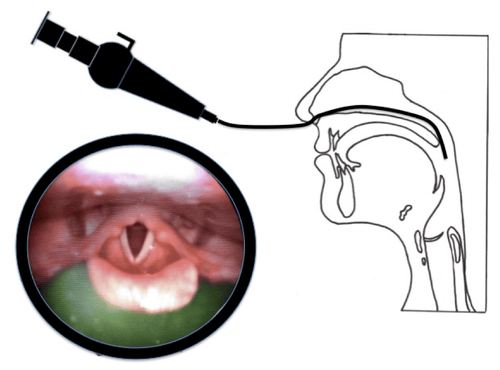This is an automatically translated article.
The article was consulted with Specialist Doctor Ear - Nose - Throat Doctor - Department of Medical Examination & Internal Medicine - Vinmec Hai Phong International Hospital.
Nosebleed is a common symptom, which can be caused by trauma or dry nasal mucosa. Sometimes it can be due to systemic causes such as high blood pressure or blood disease. For bleeding points in the anterior nose, there is an indication to insert the nose wick first to stop the bleeding.
1. What is anterior nosebleed?
Most nosebleeds originate in the anterior part of the nose, originating from a vascular plexus in the anterior-inferior nasal septum (Kiesselbach area).
Anterior nosebleeds are less common but more severe than posterior nosebleeds, originating where the posterior nasal septum is located above the scapula, or on the inferior curvature or medial curvature on one side.
2. Causes of anterior nosebleeds The most common causes of nosebleeds are
Local trauma such as blowing or picking the nose The lining of the nose is dry and prone to bleeding Less common causes As high blood pressure can contribute to persistent nosebleeds.

3. Assess the cause of nosebleed first 3.1 History Need to ask carefully the medical history, determine which side of the nose started bleeding first; Although nosebleeds are usually rapid in onset and in both external nostrils, most patients can identify which side of the discharge was initially identified. After that, it is necessary to focus the examination on that side. In addition, bleeding time should also be considered, as should any triggers such as sneezing, blowing or nose picking, and whether the patient is taking any hemostatic measures.
Other important symptoms are also involved such as symptoms of upper respiratory tract infection , nasal congestion and nasal or facial pain. Time, number of nosebleeds, and hemostasis of previous episodes should also be recorded.
Symptoms to watch out for include easy bruising of the skin, bloody or bloody stools, hemoptysis, blood in the urine and excessive bleeding when brushing teeth, or extensive bruising during venipuncture or trauma light.
History should also note known bleeding history (including family history) and conditions associated with platelet or clotting abnormalities, especially cancer, cirrhosis, HIV and pregnant. Prescribing medications should also ask specifically about medications that can increase bleeding, including aspirin and other non-steroidal anti-inflammatory drugs, other antiplatelet agents eg clopidogrel, heparin and warfarin.
3.2 Physical examination After examining the nose using a nasal speculum and illuminator, it is possible. perform aspiration or use an instrument to check the site of bleeding.
Anterior bleeding sites are usually easy to detect on physical examination. If no bleeding site is found and only 1 or 2 episodes of minor nosebleeds are present, no further examination is needed. If the bleeding is profuse or recurrent and the bleeding site is not visible, endoscopy is indicated.
General examination is important to look for signs of bleeding conditions such as petechiae, purpura and capillary dilation (stars) at the site of perioral and oral mucosa and tumor any in the nose.
The following signs need attention:
Signs of hypokalemia on electrocardiogram, blood tests or hemorrhagic shock Patient is taking anticoagulants Signs of bleeding in the skin Bleeding uncontrollable by inserting a styrofoam or gauze impregnated with vasopressors Recurrent bleeding, especially with no known cause Many cases of anterior nosebleeds have a clear trigger, especially trauma such as blowing or picking your nose To diagnose a nosebleed first, routine tests are not usually done. If the patient has symptoms or signs of heavy or recurrent bleeding, CBC, PT, and PTT should be performed.
If in doubt, the doctor may do a CT scan in the case of a foreign body, tumor or sinusitis.

4. Indications for insertion of anterior nasal wick Use a wick (mèche) to insert firmly into the nasal cavity through the anterior nasal port. Indicated in cases of anterior nosebleeds (patients sit, the blood flows mainly through the anterior nostril) that cannot be stopped by simple measures.
4.1. Preparation for implementation The performer is an ENT specialist and has a nursing assistant.
4.2. Supporting means Nose bleed kit. Light source (Clar lamp). Vaccum. Folding wicks of gauze or specially manufactured wicks or merocel. Local anesthetic, antibiotic ointment, hemostatic ointment, paraffin oil, gumenon oil. The patient was thoroughly explained about the procedure and checked for pulse and blood pressure. Basic tests: Complete blood count, bleeding, coagulation, clotting factors, HIV. 4.3. Procedures Anesthesia: Spray or place local anesthetic. The patient lies with the head slightly tilted back. Suction blood clots in the nose, identify bleeding nasal cavity. Using an elbow clip or a trowel, gently insert the oiled or greased wick into the nasal cavity in the shape of a lamp arranged from back to front, paying attention to sagging and tightening from the beginning until it is full. If merocel is used, push merocel along the floor of the nose from anterior to posterior to the posterior nasopharynx, then inject diluted Betadin to enlarge the merocel patch. Press the tongue to check if there is still blood running down the throat.
5. Monitoring and dealing with complications 5.1. Monitor Recurrent bleeding, pulse, blood pressure, shock. Systemic antibiotic against infection. Pain relief, hemostasis, anti-edema Maximum wick withdrawal after 48 hours. 5.2. Treatment of shock due to pain and fear: Explain carefully to the patient before the procedure, use sedatives, cardiovascular support. The wick slips down the throat due to not sagging or tightening: Re-insert the wick, paying attention to sagging and tightening from the beginning. After inserting, the blood still flows: Check the other nostril for bleeding, check again to see if the wick is inserted correctly. Possibly accompanied by posterior nosebleed, the posterior nasal wick must be inserted. Vinmec International General Hospital is one of the hospitals that not only ensures professional quality with a team of leading doctors, modern equipment and technology, but also stands out for its examination and consulting services. and comprehensive, professional medical treatment; civilized, polite, safe and sterile medical examination and treatment space.
Please dial HOTLINE for more information or register for an appointment HERE. Download MyVinmec app to make appointments faster and to manage your bookings easily.













